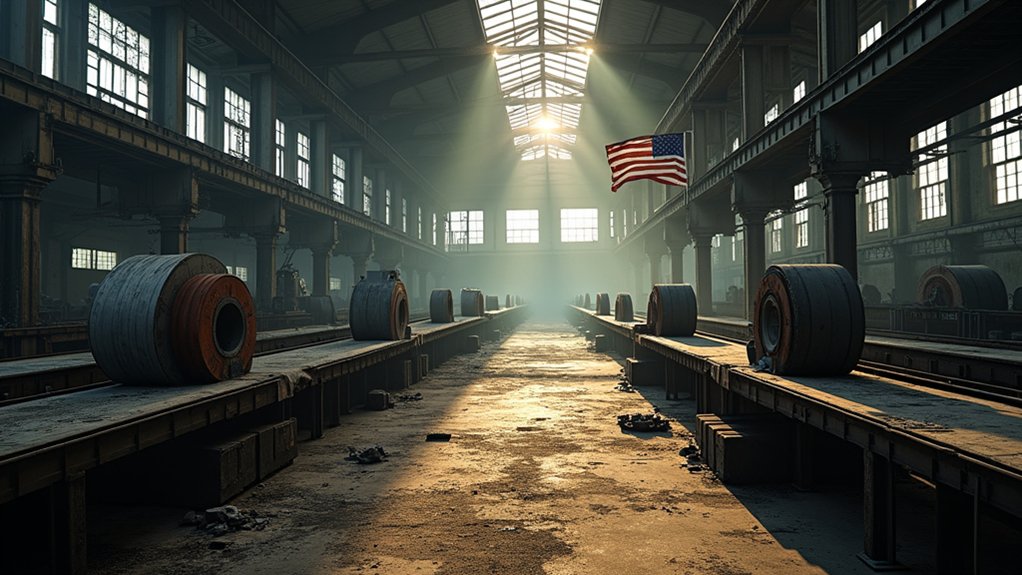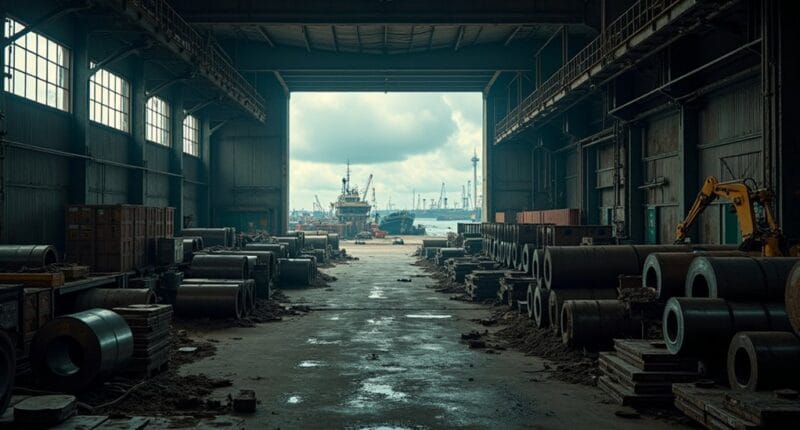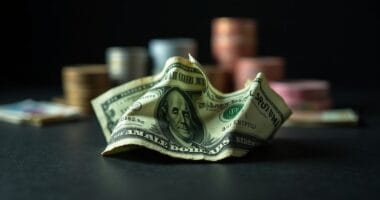JPMorgan’s analysts aren’t mincing words: Trump’s proposed 29% tariffs could tank the U.S. economy by 2025. The numbers are brutal – GDP growth crashing to 1.6%, inflation spiking, and widespread job losses across manufacturing and construction. American households face an extra $1,000 in annual costs, while global trade partners eye $3.2 trillion in retaliatory measures. This economic storm brewing on the horizon? It’s just the tip of the tariff iceberg.

As the U.S. economy braces for impact, Trump’s tariffs are delivering a one-two punch to American businesses and consumers alike. JPMorgan’s latest forecast paints a grim picture, slashing 2025 GDP growth expectations to a measly 1.6% – and that’s just the beginning of our economic headache. The proposed average tariff of 29% would devastate household budgets nationwide.
The math isn’t pretty. These tariffs could knock a whopping 0.8% off America’s GDP, while inflation creeps up another 0.2 percentage points. And here’s the kicker: we’re not just talking about luxury items getting more expensive. Essential materials like steel and aluminum are taking a hit, sending ripples through every industry that depends on them. That’s practically all of them, by the way. Business cycles demonstrate how these tariff-induced shocks can amplify economic downturns across entire industries.
The job market? It’s about to get ugly. For every person working in steel production, there are 80 people in steel-consuming jobs. Those odds aren’t great when companies start cutting costs to deal with tariff-induced price hikes. Manufacturing, construction, and automotive sectors are already sweating bullets, and layoffs could be just around the corner.
But wait, there’s more! These tariffs target imports from 90 different countries – because apparently, we needed to irritate the entire planet at once. Global markets are throwing a fit, and our trading partners aren’t exactly thrilled about the $3.2 trillion worth of U.S. exports they might need to reconsider.
The real gut punch comes to American consumers, who drive 70% of our economic activity. Higher prices mean less spending power, and less spending means economic slowdown. Low-income families will be hit particularly hard, facing an estimated annual cost increase of $1,000 due to the tariffs. It’s a vicious cycle that could spiral into something economists dread: stagflation. That’s when high prices and economic stagnation decide to have a party, and nobody’s having fun.
The scenario JPMorgan warns about isn’t just another economic hiccup – it’s a full-blown recession threat. With global supply chains in chaos and retaliatory tariffs looming, 2025 could be the year when Trump’s trade policies finally come home to roost. And it won’t be pretty.





